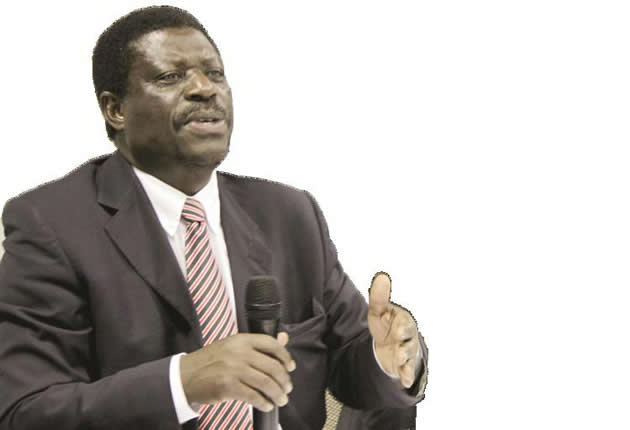Zim Cricket . . . a tale of false dawns and shattered belief

Thabiso Moyo
WITH just less than 50 days to go before the first ball is bowled in the 2015 Cricket World Cup, at Hagley Oval, Christchurch, the mood in Zimbabwe, a country long accustomed to being at the bottom of the cricketing food chain, is unprecedented in the total disinterest and absolute indifference that the populace has shown.
The usual sense of optimism that would come in anticipation of getting the odd win against lightweights such as Ireland and the United Arab Emirates has somewhat dimmed in the wake of the disembowelment of the senior national mens’ side in Bangladesh in November 2014. It is difficult to feel optimistic. Pool B has tournament favourites South Africa and India. Add on to that, pain is in the offing with the like of tournament darkhorses and perennial threats, Pakistan and the West Indies, and one begins to understand the sense of gloom and foreboding inherent among the long suffering faithful.
Not that one can blame the Zimbabwean cricket fraternity. This is indeed a demographic where the cricket enthusiast is bred and raised on a diet of failure, misadventure and unrelenting disappointment.
This is a country where there is absolutely no shame in a child growing up with thoughts, hopes and dreams of donning the South African green, the Australian canary yellow or the English navy coloured shirts.
Zimbabwean players are groomed in a system that favours the 20 over game over declaration cricket. This means players are asked to develop their skills in a high pressure format and have limited time within which to express themselves as captains, batsmen or bowlers. This results oriented variation of the game places a lesser emphasis on developing a patient outlook that is a pre-requisite of a successful cricketer, but incalculates a culture of irrational strokeplay as well as develops an attitude where it is fine to swing at the ball and miss.
The consequence of this is that individual batsmen do not learn to build an innings, nor do they learn to bat through an innings or develop a culture of scoring the recognised milestones such as 50 runs or a century.
Bowlers are become fearful of getting hit around the field and do not always learn the skills needed to pressurise genuinely good players. Captains themselves are not fully equipped with the knowledge, skills and experiences of working out an opposition batsmen and setting fielders in a way that will entrap them.
How then do we expect that to suddenly change once players are grown and playing at senior representative level?
It never ceases to amaze how nobody has ever questioned the quality of coaching at schools and clubs wherein the genuine quick bowler has become extinct. It boggles the mind to work out on what basis individuals are awarded contracts as franchise and national players and yet are clearly ill-equipped to handle the pressures and demands of a professional athlete’s lifestyle.
It is disheartening to note how the establishment has swallowed the spin that this is a group of young players who are still learning. As we continue to learn, we continue to get worse and our performances continue to spiral downwards. Now there are ICC Associate nations like Afghanistan, Kenya and Ireland making inquiries about what procedures to follow in bidding for full test status in the place of Zimbabwe should the latter be asked to give up its membership rights to sit alongside the elite of world cricket.
The progressive man would be asking what must be done to stem the negative flow. Perhaps we ought to fire the coach Mangongo and start afresh?
I believe not.
The fault does not lie completely with him. He has his faults, I will admit. Chief among these faults is hubris…extreme pride. A sense that his way is the only way that is right and that he can never be questioned or challenged. That is fine at schoolboy level. That is indeed the way to deal with children.
However, to take the dictatorial route with a group that averages 26 years in age is simply not on. You simply cannot be the team disciplinarian and expect to fulfil other coaching sub-functions such as the confidante, the friend, the teacher, the counsellor et cetera as you would never be able to establish that rapport you need for sharing experiences with players.
He needs to have different people within the management support system of the team to take those roles and he just focuses on what technical and tactical aspects are required to bring about the best possible performances. Stephen Mangongo was the Bad Guy and one suspects he secretly relishes the infamy that comes with the heavy hand with which he had dealt with his squad since he took charge of the team.
In fairness to the man, it is not completely fair to lay the blame on him. There are habits and technical aspects that must be developed as well as incalculated at school and club level, long before a player may be adjudged fit for representative selection. It should never be the role of the coach to teach a contracted Test player how to hold the bat or even how to position your fingers to take a high catch.
His job is to manage the array of talent put together by the selectors and arrange them in such a way as to best compete against whatever opposition, on whatever surface and in whatever conditions.
We need to make some pretty brave decisions to stop the rot. We need to think outside the box and implement strategies that will hurt now, but produce the results that matter later.
For example, our teams allow too many dot balls and score off too few deliveries. As a result, we never seem to score enough runs. We need to find ways of converting those dot balls into runs. This trend may be halted at junior levels where the rules may be altered so that any runs scored off a defensive shot may count as double. This will mean our players would change their outlook and see opposition deliveries as scoring opportunities and not as threats.
We need to change the way we condition seam bowlers to produce the bulkier and more explosive fast bowler. As things stand, we have none able to bowl stock deliveries at around 138 km/h or above.
In terms of tactical bowling, we do not bowl enough deliveries that force batsmen to play at deliveries and force the mistakes that will get them out.
In the coaching of bowlers, we also need to teach young players to differentiate between the passive dot ball, where the batsman is fully in control and is able to choose to leave the ball alone, and the aggressive dot ball, where the batsman is unable to play the shot he would like to play and is forced to play the defensive stroke as an evasive measure to protect himself from physical harm. It is the aggressive dot ball that the Bangladeshi spinners were able to bowl time and time again, with devastating effect as a quick review of Zimbabwe’s batting score cards would reveal.
The way forward is pitch black, and there will be many more tears before the smiles. However, a change of mindset in the way we develop the future generations may produce performances that will make Zimbabwean sides competitive and watchable once again.
*The writer Thabiso Moyo is a teacher in Matabeleland South and a cricket fanatic. He writes in his personal capacity.











Comments